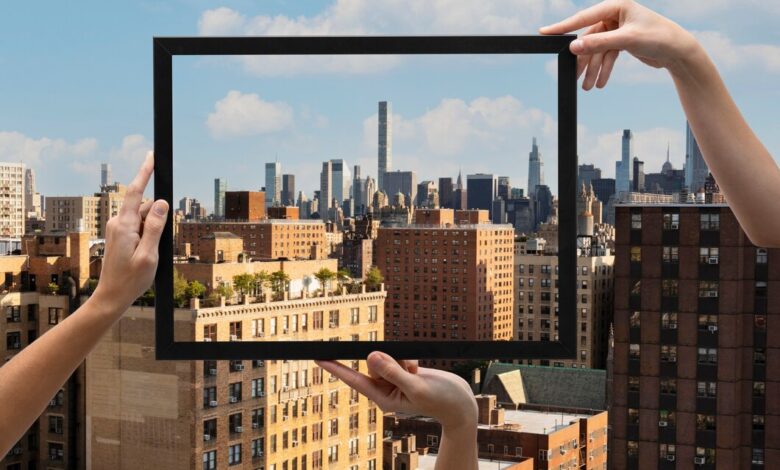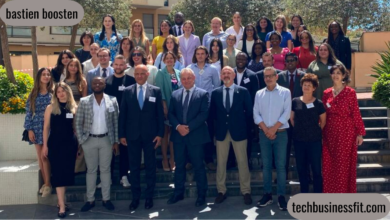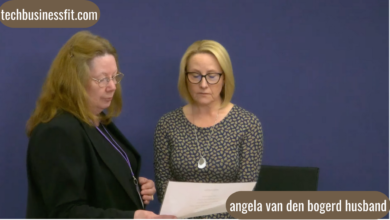Trends Shaping the Future of Urban Development

While cities around the world continue to grow and develop as they grow, urban development undergoes significant changes. New tendencies are rising that impact the manner cities are designed, built, and operated, driven by the necessity to be sustainable, the development of generation, and inclusion in society. In this piece, we can look at the principal rising tendencies shaping our future city improvement as well as their possible impacts on the cities we live in.
Sustainable and Eco-Friendly Design
Sustainability is not only a choice for city design; it is now a demand. Many towns are adopting inexperienced layout techniques to combat the effects of climate change in addition to lessening the environmental footprint of their buildings. Green structures, like have become more popular and incorporate energy-efficient technology and sustainable materials that minimize carbon footprints. Modern urban design uses biophilic design principles as well that incorporate natural elements into urban spaces with features such as vertical gardens, green roofs, as well as urban farming together with FF&E Procurement Services, ensuring that sustainable furniture and other materials are procured promptly.
These innovative solutions not only help in preserving the environment, however they improve living conditions for urban dwellers. As an example vertical gardens as well as green roofs increase the air quality and urban agriculture brings agriculture closer to the home. In cities that are striving to bring off carbon neutrality, or zero emissions green urban planning is expected to become the standard.
Smart Cities and IoT Integration
The development of smart cities caused by the convergence technology of Internet of Things (IoT) technology, is changing the way cities work. Smart infrastructures including traffic management systems, power grids, as well as communication networks are being interconnected together with live data for efficiency optimization as well as service delivery.
Smart cities employ sensors as well as AI-driven analysis to manage and monitor the use of resources such as electricity, water as well as public transportation. In particular, smart traffic systems help reduce emissions and congestion, as well as smart energy grids allow an efficient distribution of energy. Integration of IoT to improve cities’ development isn’t just about ease of use, but also making safer and more durable cities. In addition to improving public safety by live crime detection, to providing an efficient response to disasters The possibilities for smart cities are limitless.
Affordable Housing and Social Inclusion
Homelessness is a huge issue for cities that are growing rapidly however, modern urban design trends are bringing creative solutions. One key approach is prefabricated and modular housing,
which allows houses to be constructed faster and cost-effectively. This is helping meet the demand for affordable housing especially within urban zones with dense populations.
Furthermore, many cities are embracing mixed-income development that promotes the inclusion of people from all walks of life. Communities that offer affordable housing with luxury residences promote diversity while reducing the social divide. Co-living and micro-apartments are also rising in popularity providing more affordable options to those who want urban living with the same high cost typical of housing.
Making sure that housing is available to every segment of society regardless of income level, is essential for the sustainability of urban development. Cities are increasingly focused on policies that emphasize equality of access and inclusion to housing. It makes cities more accessible to every person.
Public Transportation and Mobility Solutions
Mobility is at the heart of our urban lives, and the transport of the future is more eco-friendly and effective. Electric automobiles (EVs) specifically within public transportation systems are growing in popularity and so are automated vehicles (AVs) that promise more secure and more optimized urban mobility. Cities are also expanding bike lanes and pedestrian-friendly zones to encourage environmentally friendly modes of transport.
Beyond this sharing mobility programs such as electric scooters and bicycle-sharing services, have helped decrease the dependence on cars in cities. A lot of urban planners are pushing the creation of multimodal transit hubs to bring together different types of transportation such as buses and trains and EV charging stations. The aim is to build an integrated, seamless transport system that is convenient, reliable, and sustainable.
This improvement in public transport does not just reduce congestion and pollution, but it also allows cities to be more accessible for anyone, regardless of socioeconomic situation.
Resilient Infrastructure for Climate Change
With climate change accelerating cities must be more able to handle the effects. The cities are currently investing heavily in the infrastructure needed to cope with extreme weather conditions like heatwaves, floods as well as hurricanes. Improved stormwater defenses, flood defense systems, as well as the building of resilient power grids are becoming increasingly commonplace as part of the long-term urban plan.
The other trend that is emerging is the utilization of climate-adaptive materials like G90 Galvanized Steel. This steel is extremely resistant to corrosion as well as highly sturdy, which is ideal for building infrastructure for zones that are prone to flooding and coastal areas. Urban planners are increasingly focusing on disaster preparation and designing infrastructure to mitigate the effects of disruptions caused by climate. It is the goal to warrant the city is functioning and safe when faced with more unpredictable weather conditions.
Mixed-Use Development and Compact Cities
The concept of a “15-minute city,” where the majority of essential amenities and services can be reached in a fifteen-minute cycle or walk has gained traction. This is an emphasis on the concept of compact, mixed-use development which reduces sprawl in urban areas and encourages an environmentally sustainable way of life.
Mixed-use developments that include commercial, residential as well as recreational areas are now the core of modern urban development. These types of developments create areas where residents can be able to work, live, and have fun without the need to travel far distances. This method not only decreases the amount of pollution and traffic, but it creates more social bonds as well as a sense of belonging.
Additionally, the redevelopment of urban areas has created lively urban centers that are attracting business and residential alike and making cities more dynamic and vibrant in their culture.
Tech-Driven Urban Governance
The technology revolution is changing the way cities operate, using methods that are based on data, enabling better urban management. Digital platforms allow people to communicate with their local government through apps that boost public participation and transparency. Smart governance uses data analysis to boost the urban design process, including monitoring traffic patterns and decreasing the amount of pollution.
Blockchain technology has also been making an impact on urban governance by providing safe, decentralized platforms to manage urban services such as utilities, housing even the voting process. The advancements in technology are helping cities better manage their resources definitely and adapt to the requirements of their citizens with real-time responses.
Health and Well-being in Urban Spaces
The importance of physical and mental physical well-being is now becoming an important factor in the design of urban spaces. Planners of cities are increasingly including parks, green spaces, and recreation areas to promote physical activity as well as boost the overall health of people. The streets that are geared towards cyclists, and pedestrian-friendly, and public areas that are accessible have been designed to encourage exercising and walking, which contributes to an improved urban environment as well as FF&E Procurement play a vital part in procuring the required supplies and materials to support these initiatives.
Furthermore, planners for urban areas are focusing more on the social aspect of connectivity and ensuring that the cities they design increase interaction and lessen the feeling of isolation. From shared spaces to community hub areas, the emphasis is on establishing urban settings that allow people to connect and flourish.
Conclusion
Future urban development is being defined by a myriad of current trends that focus on sustainability, technology, and inclusion in society. From sustainable design to smart cities, efficient infrastructures, and creative residential solutions Urban planners are reinventing the ways that cities function for people as well as our planet. As these changes change there is one thing that is certain the cities of the future are more sustainable, effective, and welcoming than ever before.
Also Read: The Importance of the Silver Visa in 2024




